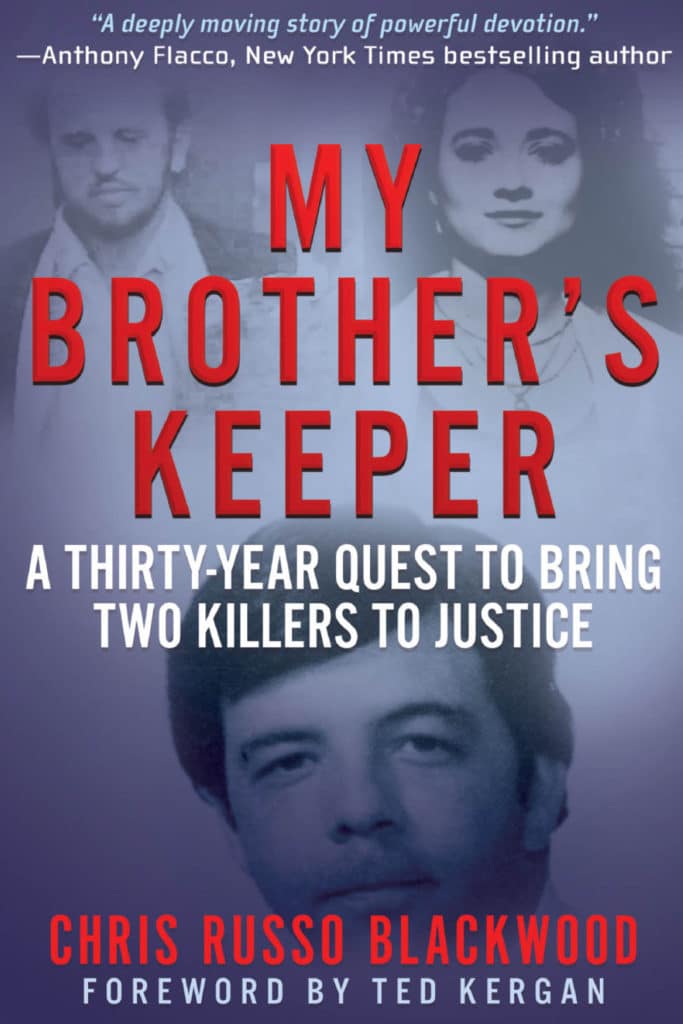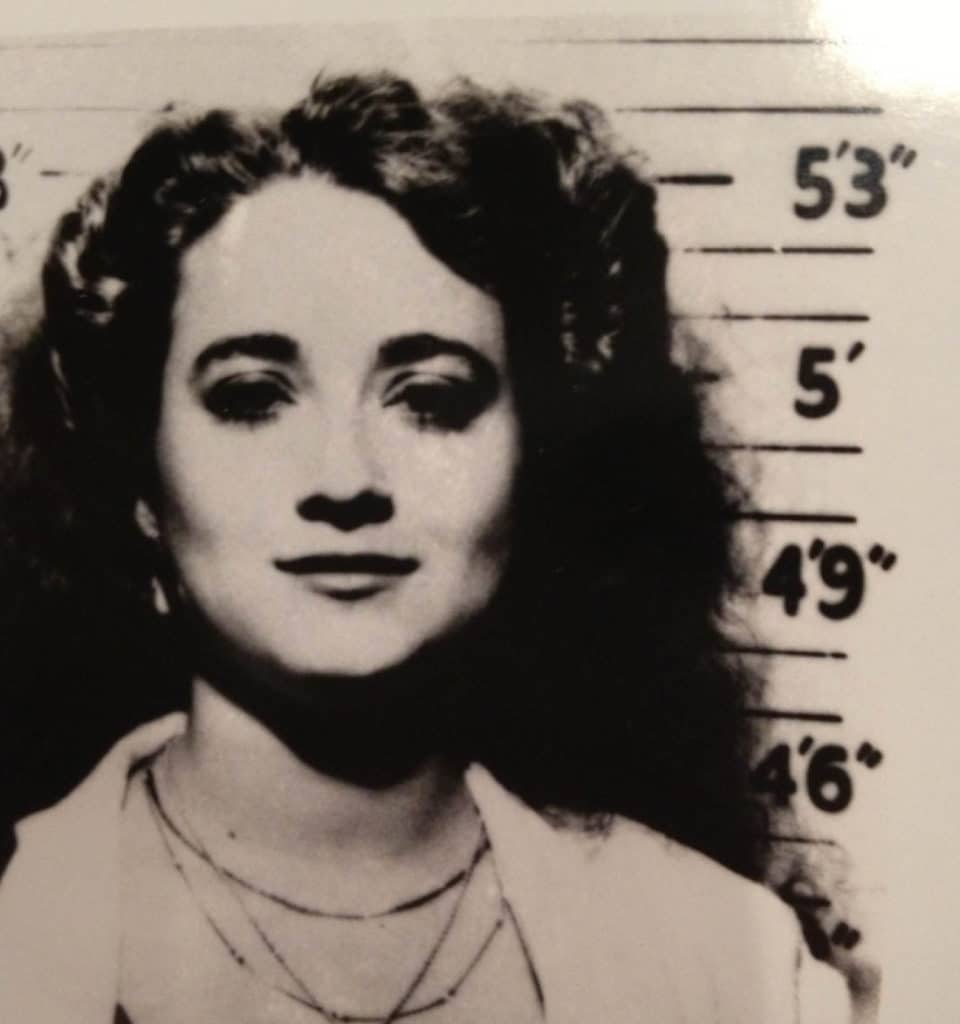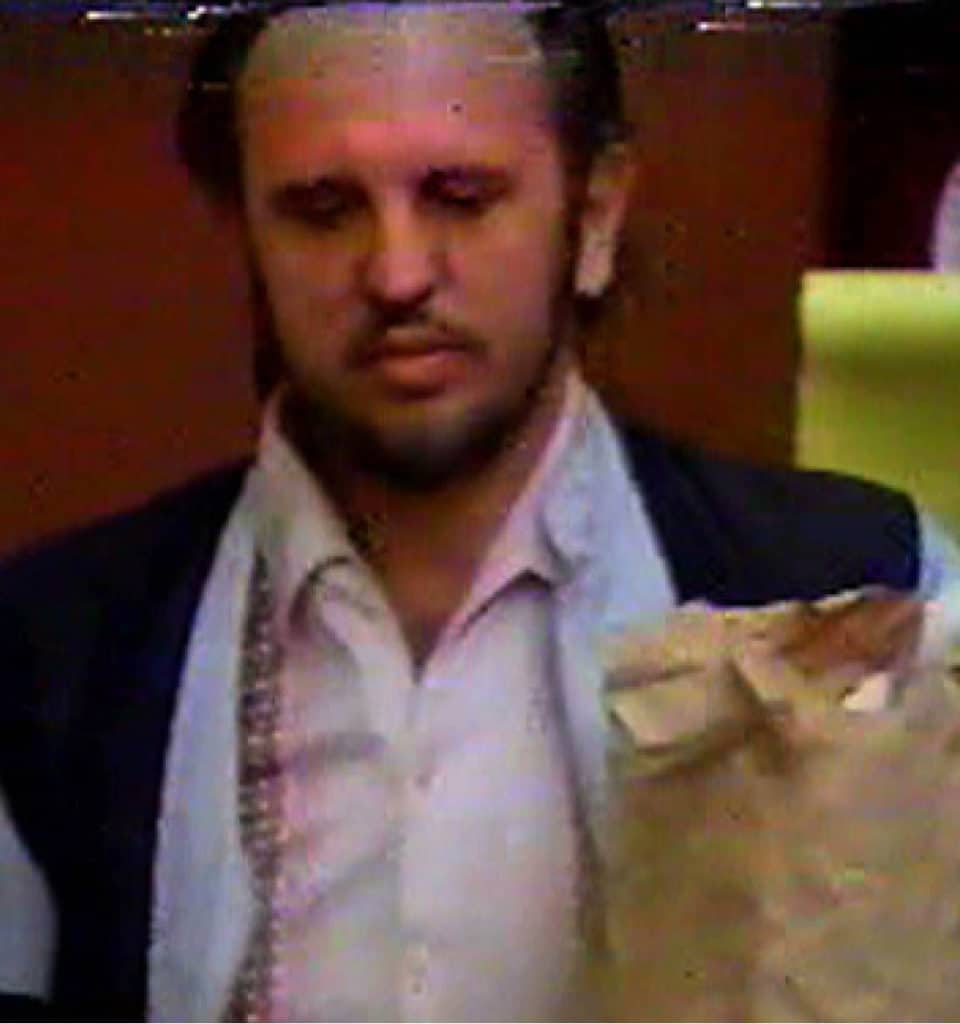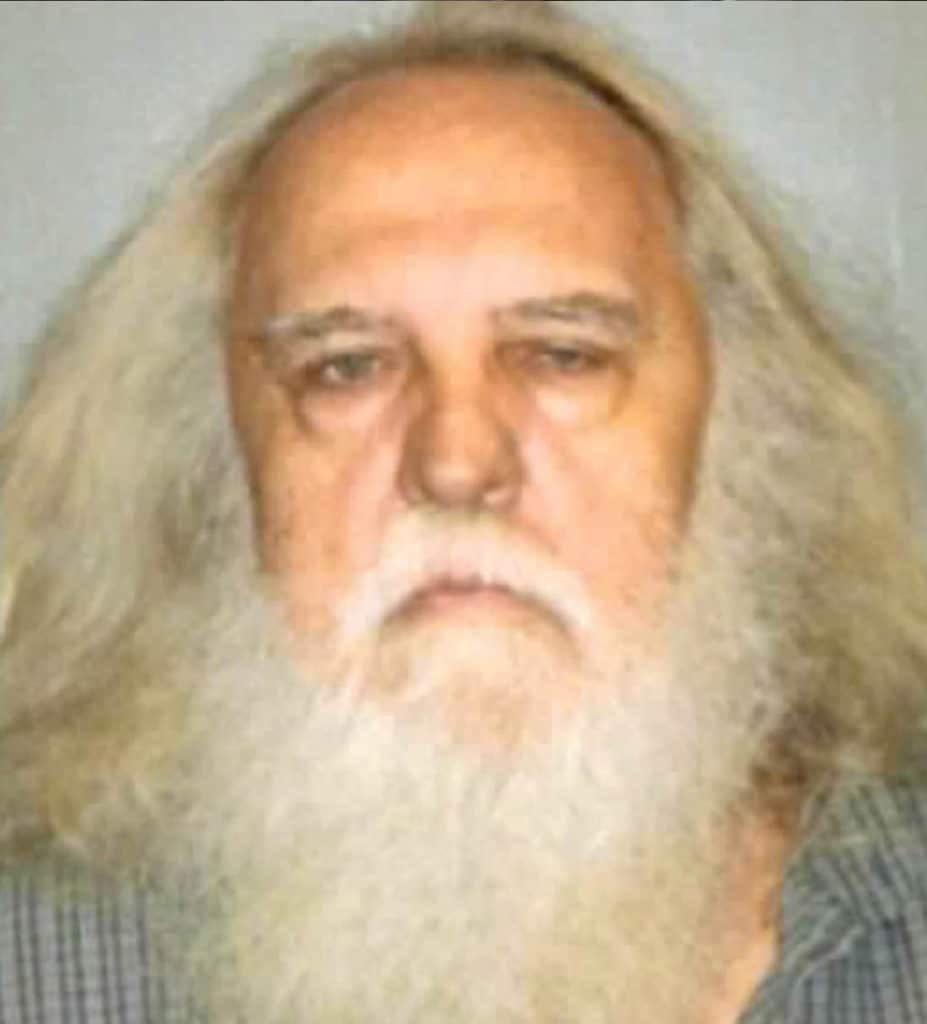My Brother’s Keeper — A Thirty-Year Quest To Bring Two Killers To Justice
By Chris Russo Blackwood. Wildblue Press, Denver, Colorado; 2017; 260 pages; $10.99
A Review By Brad Goins

A Brother’s Secret Life
Ted and Gary Kergan have been unusually close brothers since childhood. They’ve worked hard to build a chain of 14 Sonic restaurants along coastal Louisiana and plan to open 45 more in New Orleans.
Gary’s married and lives with his wife in Baton Rouge. He’s fearless, self-confident and sociable. But he has a secret life, spending long hours in a “gentleman’s club” and seeing one of the dancers after hours — allegedly for trysts that take place at her home while her husband stands in the bedroom closet.
As far as Gary’s wife is concerned, Nov. 28, 1984, is just an ordinary day for the couple — until her husband fails to come home at night. The next day, Gary’s Cadillac is found abandoned in a Baton Rouge parking lot. A tremendous amount of blood has pooled in the trunk. But there’s no sign of Gary’s body.
So far, this is pretty much grist for the mill for the true crime tale. But Blackwood launches into her first distinctive angle when Ted, operating on his own, undertakes an intense criminal investigation of his missing brother and gets almost immediate results — results that impress local law enforcement so much that they let Ted work with them on the case.
Citizen Detective
Ted’s investigation leads him to a north Baton Rouge stripper club — The Night Spot. When he first talks to the owner, a dancer herself, he takes out a $100 dollar bill and tears it in half. He hands the owner one half, telling her she’ll get the other half when she can tell him something about his brother’s disappearance.
When Ted and two Baton Rouge detectives drop into the club the next night, they talk with a dancer who verifies that missing brother Gary associated with a dancer called Erika. Another talk with the owner’s husband leads to the information that Gary and Erika left the club together at 2 am on the night Gary failed to come home. The owner shows the investigators Erika’s “go-go dancer license,” which states that her real name is Leila Mulla and her home address is in New Orleans.
After the detectives get a search warrant for Mulla’s Baton Rouge apartment, they pick up Ted for the walk-through. The three find plenty of blood. But the former tenants — Mulla and her husband Mike Dunnagan — are long gone.
The two are soon arrested in Las Vegas. When Ted learns they can only be held there for 24 hours, he again assumes the role of intrepid investigator, contacting the 24/7 Co. in New Orleans and charging the lease of a private jet to his American Express card.
On Dec. 12, 1984, Mulla and Dunnagan are booked for murder in Baton Rouge. Everyone in law enforcement is convinced the two guilty parties are in jail. But in March, 1985, Baton Rouge D.A. Bryan Bush tells the press, “I’m having real problems not having a body,” and then declines to prosecute the case. Mulla and Dunnagan walk out of jail free as birds.
This brings Blackwood to her second big angle — a 30-year gap between the initial incarceration of the couple and their eventual trial for murder.
An Adventure In Criminal Psychology
The meat and potatoes of most true crime books is the eccentric, bizarre and extreme behavior of the criminals. Although this unusual book is mainly about the investigation of the criminals, there’s still more than enough information about the perpetrators’ quirky personalities to keep traditional true crime readers riveted.
Police learn that Mulla has long been writing in a diary manufactured by the Hallmark corporation. The motto on the cover — “If you can imagine it, you can achieve it. If you can dream it, you can become it.” — is appropriately insipid and vague, and is also a bit ironic, given that Mulla earns a good part of her revenue from prostitution.
In the diary, Mulla calls Ken’s brother “Sonic Gary,” and writes of a plan to “hit Gary next time.” She also writes, “I had $240 from Sonic Gary & plan to get him next time.” This is followed by the odd statement, “I drank a lot accidentally.”
How did Mulla get to the point where she was willing to whack a $240 trick? Her childhood was free from the influence of criminals. Mulla grew up in an Ohio household of over-achieving academics. Her strict, conservative Syrian father expected her to follow in the family tradition. Throughout most of high school, Mulla did the family proud. As Blackwood puts it, “at the age of sixteen, Leila was a violin prodigy, track star and honor student.”
But then something went wrong. Mulla’s demanding parents put her through two stints of rehab after she spent time with a group of drinkers and “druggies.”
Mulla bailed by hitchhiking out of Ohio. She explained her eventual arrival in New Orleans by saying she confused the “L.A.” of Los Angeles, where she intended to go, with the “LA” of Louisiana. One can probably count that as pretty strong evidence that Mulla was rapidly losing the honor roll side of her personality.
As for Ron Dunnagan — Mulla’s husband and partner in crime — his childhood was a very different story. When he was growing up, he was routinely abused by his sadistic father, who often forced him and his sister to kneel while facing a wall for days on end (among other degradations). Both siblings were eventually diagnosed as schizophrenic.
This brings us to what, for this reader, was the most intriguing question raised by the story. Was Mulla also schizophrenic — or at least extremely mentally ill? Or was she merely riffing off her husband when she made extremely bizarre statements that indicated she was delusional?
As an example, at one point, after her move to B.R., she writes in her Hallmark book, “It’s weird here in Baton Rouge. Satan’s trying to keep us here, but it won’t work.” She wrote often in the book of being besieged by “spirits,” and especially by one spirit named “Squeekee.”
Could this have been schizophrenia, or perhaps some schizoaffective disorder? After Mulla was released from prison in Baton Rouge, she underwent a psychotic break and spent most of 1985 in an Atlanta mental institution. While there, she was prescribed the anti-psychotic drug Thorazine, which was often given to schizophrenics at the time.
Years later, when she went through a second round of questioning with Baton Rouge, her answers again raised the issue of just whose psychosis was at play:
Mulla: “In New Orleans … he (Dunnagan) started with the ghost in the closet.”
Detective: “He told you there was a ghost in the closet in y’all’s place and he just built on it?”
“And I believed everything he said, once again, like an idiot. I believed in the ghost in the closet. I believed, you know, it was watching me. He was watching me.”
“You get to Baton Rouge. You get an apartment. He said a ghost was there?”
“It was the same ghost.”
“Did the ghost have a name?”
“Squeekee.”
At any rate, Mulla was eventually able to steady herself. She obtained a nursing license in 2006 and became a practicing nurse in Queens, N.Y. Gradually, the Baton Rouge detectives who were convinced she was a murderer retired.
Thirty Years On …
When 19-year-old Crowley native Memry Tucker joined the Baton Rouge Police Dept. in 2011, she had no idea her late father’s one-time office mate — Gary Kergan — had been killed in Baton Rouge. But a veteran detective in the department’s newly formed cold case division put two and two together and invited Tucker to look at the case file. Fascinated, she did what no one could do in 1984 — test the blood in the back of Gary’s Cadillac for DNA. The blood was Gary’s.
As soon as she knew that, Tucker called the long-suffering brother Ted, who’d been following the activities of Mulla and Dunnagan via social media. He knew just where they lived. Again working in tandem with the BRPD, Ted travelled to their respective residents and was on hand when each was arrested for murder a second time.
In October, 2015, Lulla and her former husband were both found guilty of murder in a Baton Rouge court room.
A Departure From The True Crime Formula
Although this review hits the main points of the book’s plot, it still leaves plenty for potential readers to discover. For one thing, there is no mention of anything
that happens in the fairly lengthy depiction of the trial. And for another, I’ve said nothing about Mulla and Dunnagan’s claims to have disposed of Gary’s body in an especially gruesome way. Even though Mulla and Dunnagan agree on this nightmarish scenario, Ted never believes the two could have had the time to do what they claimed they did between Gary’s 2 am disappearance and the time his abandoned Cadillac was found a few hours later.
Those who are intrigued by the idea of a narrative that goes beyond the bounds of the standard true crime book in significant ways should find My Brother’s Keeper a satisfying read. It’s a book that’s as much about the unusual and unusually long investigation of the crime as it is about the personas of the criminals. It’s not so much a “who done it” as a “how do we get those who done it?” (Pardon the lapse in grammar.)
The fact that most of the story takes place in Baton Rouge, Crowley, Bossier City and New Orleans will be a boost for those familiar with Louisiana.
The publisher, WildBlue Press, is new to me. But it has already released books by two of the most popular true crime writers: M. William Phelps and Burl Bauer. It certainly seems to be intent on making a mark in the field.
Readers can buy ebook, paperback and audiobook versions of My Brother’s Keeper at amazon.com, bn.com or Blackwood’s site mbkbook.com. Amazon’s price is presently $10.99.




















Comments are closed.